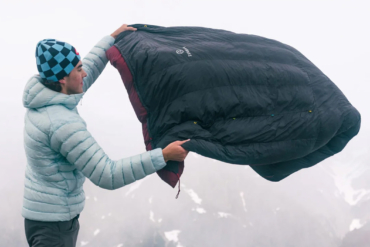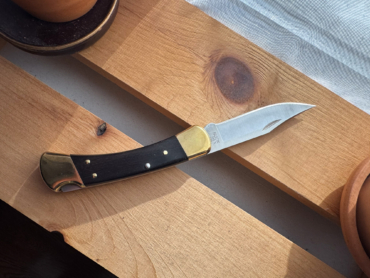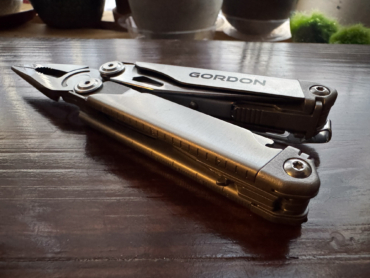
If you’re headed into the woods, you should have a knife. Widely regarded as the single most important survival tool for those who venture into the wilderness, a quality knife sits on the top of any reputable backcountry packing list.
A survival knife generally has a single, fixed blade. Folding knives can be used in many of the same ways but are not as strong or durable as fixed blades. Many hunting knives can serve dual purpose as a survival knife although they tend to be lighter and a bit less durable.
Choose a good quality survival knife with a full tang (the blade metal extends through the handle), high carbon or other hard, durable steel that holds an edge, and a simple, no-frills design. A drop point (4” to 6” long) is the most common blade on survival knives.
A survival knife is one of the best tools in the outdoors. Here’s why.
Building tools — A survival knife is a great tool in itself, but it can be used to make so much more. Need a spear? Simply sharpen a stick into a point, then split the point into four by driving the knife down and into the sharpened stick. Split the points by wedging a rock between the four points and you’ve got a great spear for catching small game and fish.

But don’t be dumb and lash your knife onto a stick. That’s the best way to lose your most important tool! Never throw your knife, whether it’s attached to a stick or not.
Fishhooks, traps and much more can be whittled from wood. Really need a projectile? Use your knife and some parachute cord to fashion a bow from a sapling!
Cutting wood – A big, strong knife can take the place of a hatchet for cutting branches and splitting modest-size wood down into kindling. Hold the knife against the surface to be cut, and hit the back of the blade with a branch a little bigger around than a broomstick. Just be careful not to hit your hand! Also, make sure the knife is pointed away from your body and doesn’t swing down into your leg after you whack it.
We document wood splitting with a knife in detail at the post “How To Make Firewood With A Survival Knife.”

Fire starting material – Stripping bark off a tree or log, peeling birch bark or shaving dry branches is easy with a survival knife.
Make fire – A ferrocerium rod and knife make for a potent fire starter with super hot sparks. Cast them onto well prepared tinder (or better yet a Vaseline-soaked cotton ball) to build a blaze. This is a great backup technique but not a replacement for matches for daily fire starting. It’s also good to practice before emergency strikes.
Digging – It’s not great for a knife, but in a pinch they will dig like crazy. Find grubs by ripping up old logs and stumps for emergency food (ick, but full of fatty calories) or bait (much better!) or dig yourself a potty hole. If hiking many miles in the woods, a knife makes a lot more sense to carry than a shovel.
Shelter construction — To build a lean-to or other shelter, you’ll need to cut some branches and boughs off trees. Start by chopping evergreen boughs on the ground for padding then build your lean-to over them with a few stout branches as a frame. More boughs and leafy branches (palm fronds in the tropics) will make shelter from the rain and cold winds.
As a stake – Definitely not an ideal use, but if you REALLY need a stake, you can pound the knife into the ground or a tree branch to anchor whatever really important item needs staking. Better yet, use the knife to fashion a stake from a tree branch.
First Aid – Cut material into strips for bandages or tourniquets. Cut branches into splints. Cut apart packs for material to build a litter. Ingenuity and a strong knife go a long way in an emergency.
Hitting things – Break windows in an emergency or hammer nails or stakes with the pommel of the handle. Just put the sheath on for safety first!






